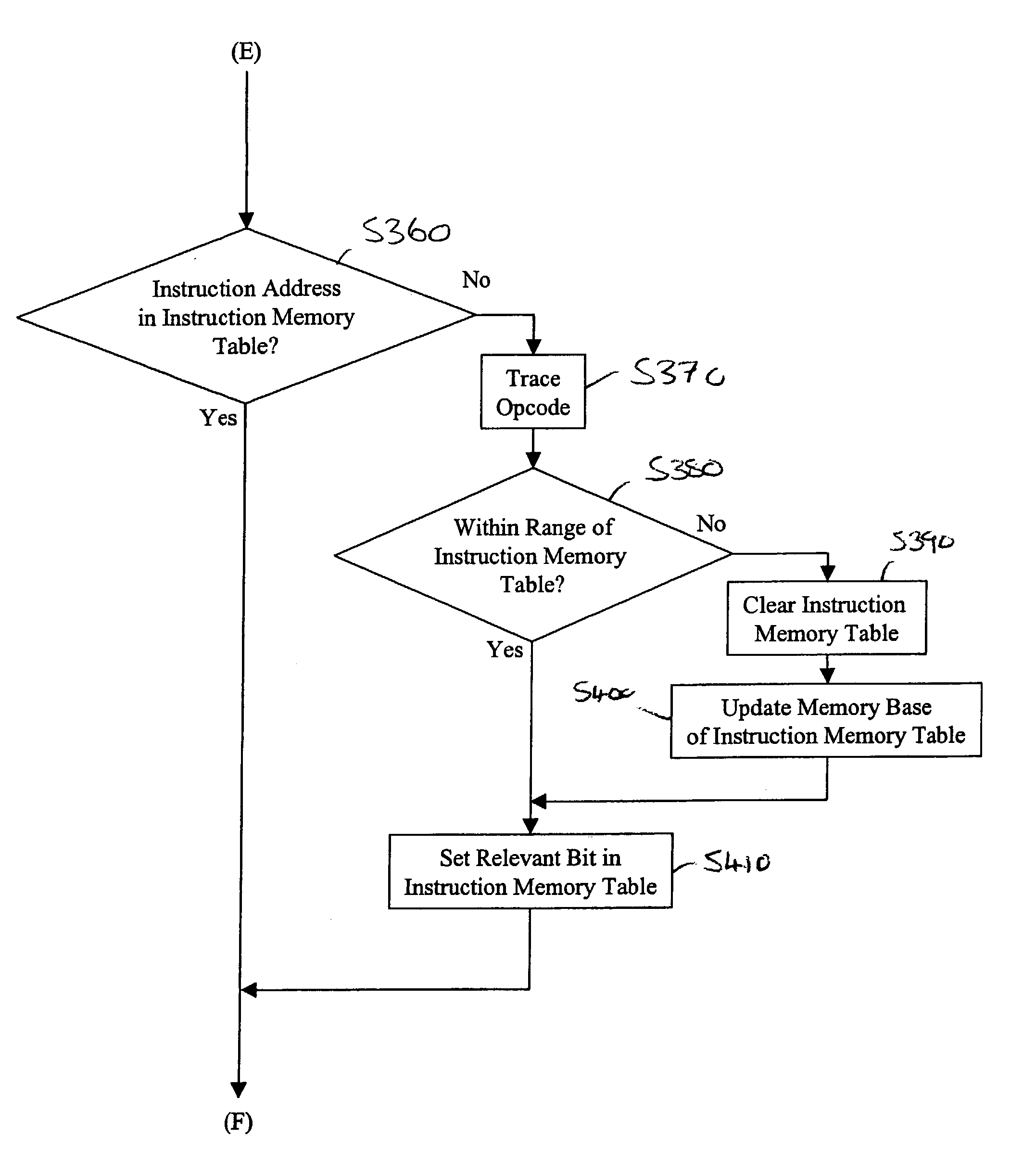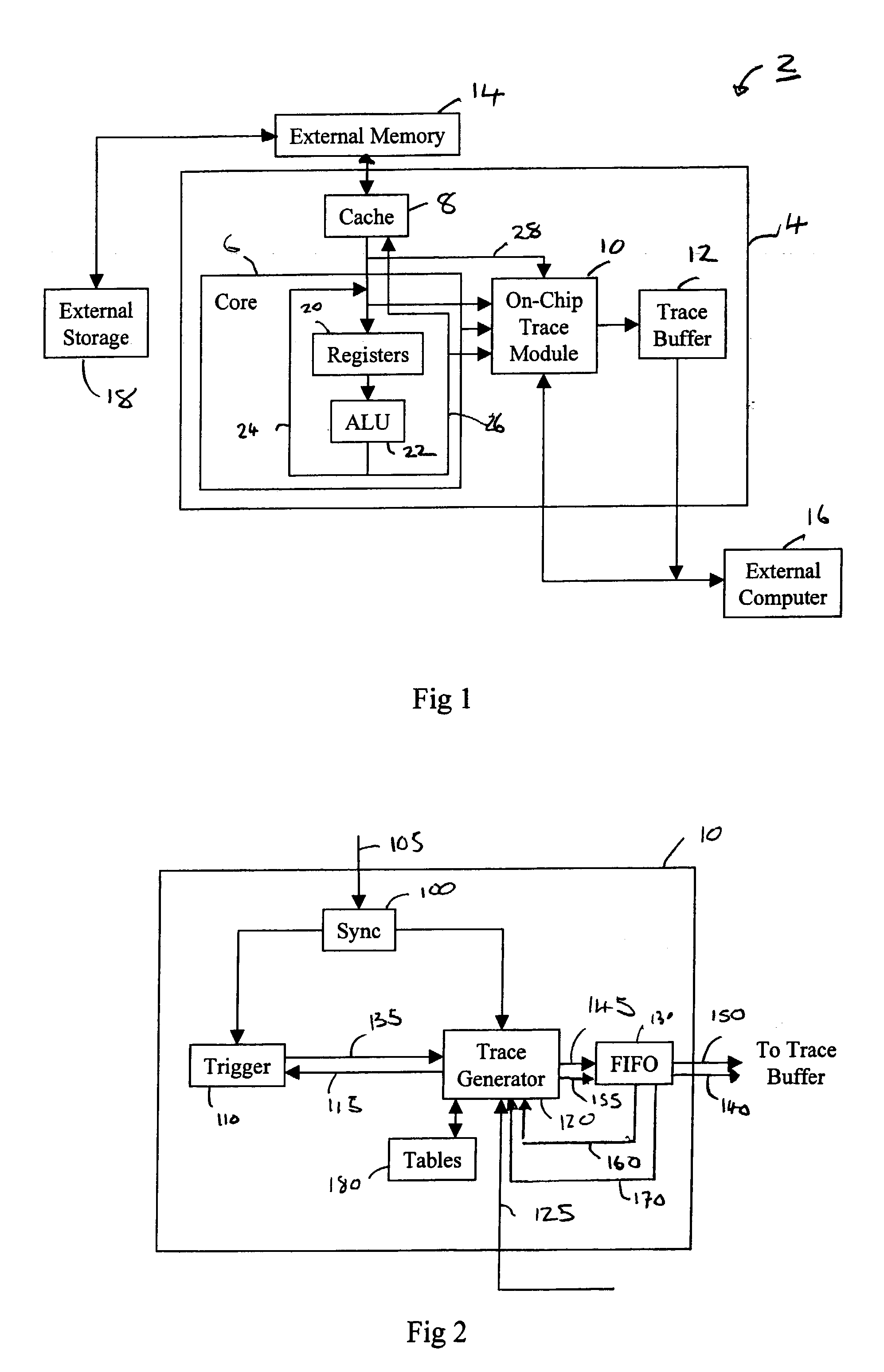Generation of trace elements within a data processing apparatus
- Summary
- Abstract
- Description
- Claims
- Application Information
AI Technical Summary
Benefits of technology
Problems solved by technology
Method used
Image
Examples
Embodiment Construction
[0097] FIG. 1 schematically illustrates a data processing apparatus 2 providing an on-chip trace module. An integrated circuit 4 includes a microprocessor core 6, a cache memory 8, an on-chip trace module 10 and an on-chip trace buffer 12. It will be appreciated that whilst this illustrative embodiment shows an on-chip trace module and on-chip trace buffer 12, it will be appreciated that the trace module and / or trace buffer could instead be provided separately and coupled with the integrated circuit 4 or processor core 6.
[0098] The data processing apparatus 2 has architectural state associated therewith. Typically, some architectural state is associated with each instruction the processor core 6 is executing. Other architectural state will relate to overall operation or status of the processor core or other modules or units to which the processor core 6 or data processing apparatus 2 is coupled. Such architectural state may include the contents of registers, the values stored at par...
PUM
 Login to View More
Login to View More Abstract
Description
Claims
Application Information
 Login to View More
Login to View More - R&D
- Intellectual Property
- Life Sciences
- Materials
- Tech Scout
- Unparalleled Data Quality
- Higher Quality Content
- 60% Fewer Hallucinations
Browse by: Latest US Patents, China's latest patents, Technical Efficacy Thesaurus, Application Domain, Technology Topic, Popular Technical Reports.
© 2025 PatSnap. All rights reserved.Legal|Privacy policy|Modern Slavery Act Transparency Statement|Sitemap|About US| Contact US: help@patsnap.com



